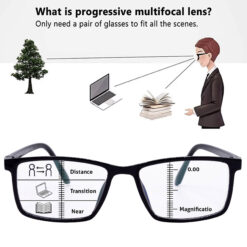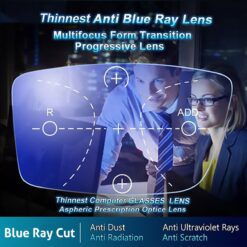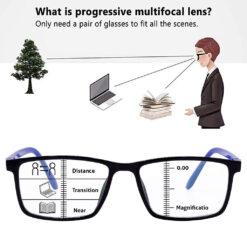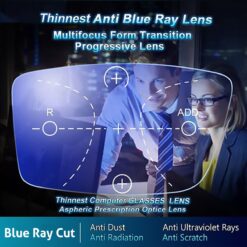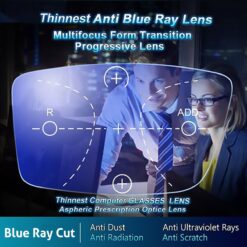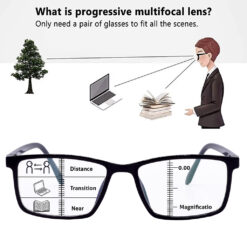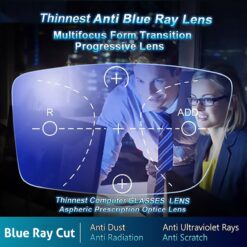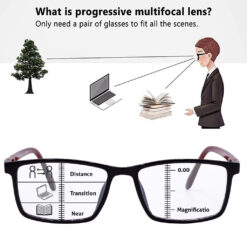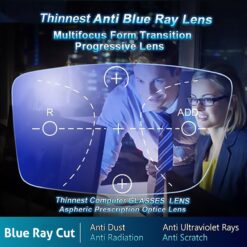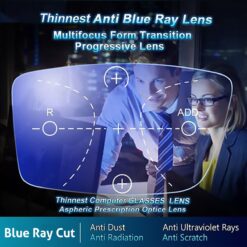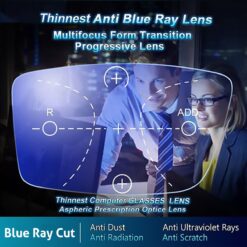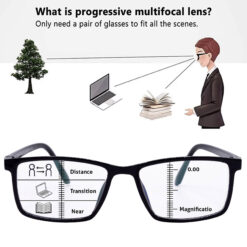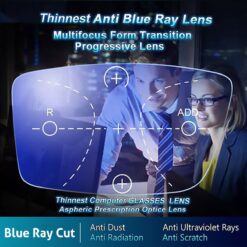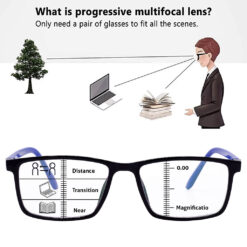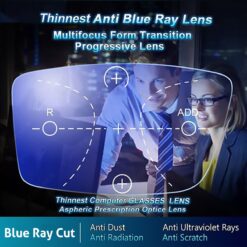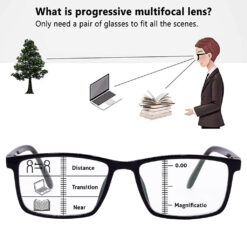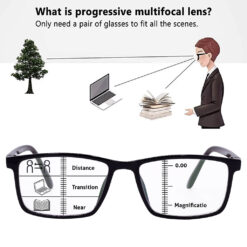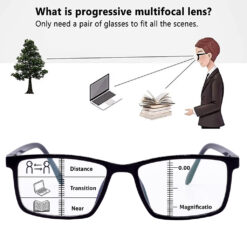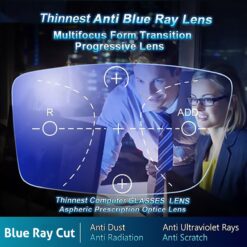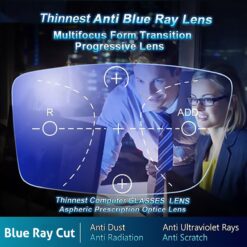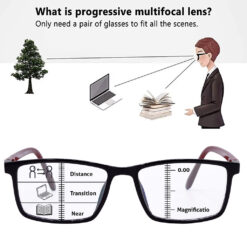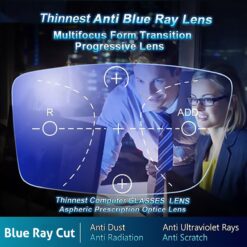Progressive Reading Glasses
Progressive Reading Glasses
Progressive Reading Glasses
Progressive Reading Glasses
Progressive Reading Glasses
Progressive Reading Glasses
Progressive Reading Glasses
Progressive Reading Glasses
Progressive Reading Glasses
Progressive Reading Glasses
Progressive Reading Glasses
Progressive Reading Glasses
Progressive Reading Glasses
Progressive Reading Glasses
Progressive Reading Glasses
Buy Power Reading Glasses Online – Complete Selection at OpticalIndia.com
Finding the perfect power reading glasses doesn’t have to be a struggle anymore. Whether you’re squinting at your smartphone screen or holding books at arm’s length, the right pair of reading glasses can transform your daily experience and bring clarity back to your close-up tasks.
Understanding Power Reading Glasses
What Are Power Reading Glasses?
Power reading glasses are specialized eyewear designed to help people see close-up objects clearly. Unlike regular sunglasses or fashion frames, these glasses contain magnifying lenses that compensate for age-related changes in your eye’s natural focusing ability. When you reach your 40s, the lens in your eye becomes less flexible, making it harder to focus on nearby text or objects – a condition called presbyopia.
These aren’t just simple magnifiers either. Quality power reading glasses are engineered with precise optical measurements to reduce eye strain while providing crystal-clear vision for reading, writing, or detailed work. The power is measured in diopters, typically ranging from +1.00 to +3.50, with stronger powers available for those who need them.
How Power Reading Glasses Work
Think of your eye’s lens like a camera that’s lost its ability to autofocus. Power reading glasses act as an external focusing system, bending light rays before they enter your eye so everything up close appears sharp and clear. The convex lenses in reading glasses help your eye focus with less effort, which means you can read for longer periods without fatigue or headaches.
What makes modern reading glasses special is their ability to provide uniform magnification across the entire lens surface. This ensures that whether you’re looking at the center or edges of a page, everything remains in focus without distortion. The result? Comfortable reading sessions that don’t leave you rubbing tired eyes afterward.
Who Needs Power Reading Glasses?
Age-Related Vision Changes (Presbyopia)
Most people start noticing changes in their near vision around age 40, though this can vary from person to person. You might find yourself holding menus further away at restaurants or turning on extra lights when reading in the evening. This isn’t a disease – it’s a natural part of aging that affects nearly everyone, regardless of whether they’ve needed glasses before.
The tell-tale signs include difficulty reading small print, eye strain during close work, and the need for brighter lighting when doing detailed tasks. Some people also experience headaches or fatigue after reading or using their phones for extended periods. If any of this sounds familiar, you’re not alone – millions of people discover they need reading glasses each year.
Digital Eye Strain and Screen Use
Here’s something interesting: even younger people are finding they need reading glasses due to increased screen time. Looking at computers, tablets, and smartphones for hours puts extra demand on your focusing system, leading to digital eye strain. Symptoms include tired eyes, blurred vision, and difficulty refocusing between your screen and other objects.
Computer and mobile device use requires your eyes to work harder than traditional reading because screens emit blue light and often have lower contrast than printed materials. Many people find that reading glasses designed for screen use – often with slightly less power than traditional reading glasses – can provide significant relief during long work sessions.
Types of Power Reading Glasses Available
Full-Frame Reading Glasses
Full-frame reading glasses have magnification across the entire lens, making them perfect for extended reading sessions or detailed close work. These are ideal if you spend long periods reading books, doing crafts, or working on projects that require sustained near vision. The complete lens provides a wide field of clear vision, so you don’t have to worry about finding the right spot to look through.
However, there’s a trade-off: wearing full-frame readers while looking at distant objects will make everything blurry. Many people keep multiple pairs – one for reading and another for general use – or choose half-frame styles that allow them to look over the lenses when needed.
Half-Frame Reading Glasses
Half-frame reading glasses, sometimes called “half-moon” glasses, sit lower on your nose and only cover the bottom portion of your visual field. This design lets you look down through the lenses for close work and over them for distance vision without constantly taking your glasses on and off.
These styles work particularly well for people who frequently switch between reading and looking up – like teachers, cashiers, or anyone who needs to interact with others while doing paperwork. The frames are often lighter and less noticeable than full-frame options, though they provide a smaller reading area.
Bifocal Reading Glasses
Bifocal reading glasses combine two different optical powers in one lens – typically distance vision in the upper portion and reading power in the lower section. While traditional bifocals have a visible line separating the two powers, modern versions can provide a smoother transition between the different zones.
These glasses eliminate the need to switch between multiple pairs but require an adjustment period as you learn to position your head correctly for different tasks. They’re particularly useful for people who need vision correction for both near and far distances but prefer carrying just one pair of glasses.
Progressive Reading Glasses
Progressive lenses represent the latest technology in multifocal design, offering a gradual transition from distance to intermediate to near vision without visible lines. Unlike traditional bifocals, progressives provide clear vision at multiple distances, making them ideal for people who work on computers, read books, and need to see clearly at various distances throughout the day.
The adjustment period for progressives can be longer than other types of reading glasses, but many people find the convenience of seamless vision correction worth the initial learning curve. Modern progressive designs have wider reading areas and reduced distortion compared to earlier versions.
Reading Glasses for Women – Stylish and Functional
Latest Designs for Women
Women’s reading glasses have evolved far beyond the basic, utilitarian frames of the past. Current trends include elegant cat-eye shapes, oversized frames that make a fashion statement, and delicate metal designs that complement professional attire. Many women appreciate frames that transition seamlessly from reading at home to meetings at work.
Popular styles include transparent frames that work with any outfit, tortoiseshell patterns for a classic look, and bold geometric shapes for those who want their glasses to be a focal point. The key is finding frames that reflect your personality while providing the optical quality you need for comfortable vision.
Comfortable Frame Materials
Modern women’s reading glasses prioritize comfort without sacrificing style. Lightweight materials like TR90 memory plastic and titanium provide all-day wearability without leaving marks on your nose or behind your ears. These materials are also flexible, so your glasses can withstand the demands of daily life.
Acetate frames offer durability and come in countless colors and patterns, while hypoallergenic materials ensure that even those with sensitive skin can wear their glasses comfortably. Spring hinges add flexibility to the temples, accommodating different head sizes and reducing pressure points that can cause discomfort during extended wear.
Men’s Reading Glasses – Professional and Trendy
Contemporary Styles for Men
Men’s reading glasses combine functionality with contemporary style, featuring clean lines, sophisticated materials, and versatile designs that work in professional settings. Popular options include sleek metal frames, classic rectangular shapes, and modern square designs that add structure to round faces.
Current trends favor minimalist designs with subtle details rather than flashy embellishments. Many men prefer frames in neutral colors like black, brown, or gunmetal that coordinate with their wardrobe, though bolder options are available for those who want to make a statement.
Durable Frame Options
Men’s reading glasses are built to withstand daily wear and frequent handling. Metal frames made from stainless steel or titanium offer exceptional durability while remaining lightweight. These materials resist corrosion and maintain their shape even with regular use.
For those who prefer plastic frames, high-quality acetate and TR90 materials provide impact resistance and flexibility. Many men’s frames feature reinforced hinges and sturdy construction that can handle being tossed into bags or pockets without damage.
Specialized Reading Glass Features
Blue Light Blocking Reading Glasses
Blue light blocking reading glasses have become essential for anyone who spends significant time looking at digital screens. These specialized lenses filter out high-energy blue light emitted by computers, tablets, and smartphones, which can contribute to eye strain and sleep disruption.
The filtering technology built into these lenses helps reduce digital eye strain symptoms like tired eyes, headaches, and difficulty focusing after screen time. Many people also find that wearing blue light glasses in the evening helps them fall asleep more easily by not disrupting their natural sleep-wake cycle.
Anti-Glare Reading Glasses
Anti-glare coatings eliminate reflections from your lenses, providing clearer vision and reducing eye strain. This coating is particularly beneficial for reading under bright lights or when using digital devices, as it minimizes the visual distractions that can make your eyes work harder.
The anti-reflective treatment also has cosmetic benefits – it prevents your lenses from reflecting light back to others, so people can see your eyes clearly during conversations. This makes your glasses practically invisible in photos and social interactions.
Lightweight Reading Glasses
Benefits of Lightweight Frames
Lightweight reading glasses offer superior comfort for extended wear, reducing pressure on your nose bridge and behind your ears. Modern materials like TR90 plastic and titanium can make frames up to 40% lighter than traditional materials while maintaining strength and durability.
The reduced weight means you’re less likely to develop pressure marks or discomfort during long reading sessions. Lightweight frames also tend to stay in position better, reducing the need for constant adjustments throughout the day.
Computer Reading Glasses vs Regular Reading Glasses
Understanding the Difference
Computer reading glasses are specifically designed for the intermediate distance between you and your screen – typically 20-26 inches away. This is different from traditional reading glasses, which are optimized for closer distances of 14-16 inches, like holding a book or newspaper.
The power difference might seem small, but it makes a significant impact on comfort during extended computer use. Computer glasses typically require about 0.50 to 0.75 diopters less power than reading glasses, providing the right amount of magnification for screen work without over-correcting your vision.
Which One Should You Choose?
If you primarily read books and do close-up tasks, traditional reading glasses are your best choice. But if you spend hours at a computer or frequently use tablets and smartphones, computer-specific reading glasses will provide more comfortable vision. Many people find it helpful to have both types for different activities.
Consider your daily routine when making this decision. Office workers who spend most of their day looking at screens often prefer computer glasses, while avid readers and crafters benefit more from traditional reading power.
Prescription vs Non-Prescription Reading Glasses
Benefits of Prescription Reading Glasses
Prescription reading glasses are custom-made based on your specific vision needs, accounting for any differences between your eyes and correcting astigmatism if present. This personalized approach provides clearer vision and reduces eye strain compared to over-the-counter options.
If you have different vision requirements in each eye or any astigmatism, prescription readers will provide significantly better visual comfort. The custom fitting also ensures that the optical center of each lens is positioned correctly for your eyes, maximizing the effectiveness of the prescription.
When Over-the-Counter Readers Work
Non-prescription reading glasses work well for people who have equal vision in both eyes and don’t have astigmatism. They’re convenient, affordable, and readily available, making them a good choice for occasional use or as backup pairs.
Over-the-counter readers are ideal for people who only need reading help occasionally or want to keep extra pairs in different locations like the car, office, or kitchen. However, if you experience headaches, eye strain, or blurred vision with store-bought readers, it’s time to consider prescription options.
Latest Chashma Design Trends 2025
Modern Frame Styles
The latest chashma designs for 2025 embrace bold geometric shapes, transparent materials, and retro-inspired styles with modern updates. Oversized frames continue to be popular, offering both fashion appeal and practical benefits like wider fields of vision for reading.
Trending styles include angular geometric frames, round vintage-inspired designs, and ultra-thin rimless options for a minimalist look. Color trends favor clear transparent frames, warm tortoiseshell patterns, and bold neon accents for those who want to make a statement.
Color and Material Trends
Material innovation is driving many of the latest trends, with eco-friendly options and high-tech materials gaining popularity. Lightweight titanium and memory plastic frames offer durability and comfort, while sustainable materials appeal to environmentally conscious consumers.
Color palettes for 2025 include soft pastels, clear transparent finishes, and bold primary colors. Multi-tone frames combining different materials or colors in one design are particularly trendy, allowing wearers to express their individual style.
Affordable Reading Glasses – Budget-Friendly Options
Best Value Reading Glasses
Quality reading glasses don’t have to break the bank. Many excellent options are available starting from ₹500-₹1500, offering good optical quality and comfortable frames. The key is knowing what features matter most for your needs and choosing accordingly.
Budget-friendly options often provide excellent value by focusing on essential features like accurate lens power, comfortable fit, and durable construction while skipping premium add-ons you might not need. This approach allows you to get quality vision correction at affordable prices.
Quality Without Compromise
Even affordable reading glasses can provide clear vision and comfortable wear if you choose wisely. Look for frames made from quality materials like flexible plastic or lightweight metal, and ensure the lenses are properly centered and distortion-free.
Many budget-friendly options include useful features like anti-scratch coatings, spring hinges for flexibility, and attractive frame designs. The key is balancing cost with the features that matter most for your specific needs and usage patterns.
How to Choose the Right Power for Your Reading Glasses
Understanding Diopter Strength
Reading glass power is measured in diopters, with strengths typically ranging from +1.00 to +3.50. The number indicates how much magnification the lens provides – higher numbers mean stronger magnification for more severe near vision problems.
Most people in their early 40s start with +1.00 to +1.50 diopters, while those in their 50s and beyond may need +2.00 to +3.00 or higher. The progression is gradual, and you’ll typically need stronger glasses as you age.
Testing Different Powers
The best way to determine your ideal power is to try different strengths while reading normal-sized text in good lighting. Start with the weakest power that provides clear vision – using stronger glasses than necessary can cause eye strain and headaches.
When testing, hold reading material at your comfortable reading distance (usually 14-16 inches) and see which power allows you to read easily without squinting or straining. The right power should make text appear sharp and clear without making it seem unnaturally large.
Single Vision Glasses for Reading
Single Vision vs Reading Glasses
Single vision lenses provide one consistent prescription across the entire lens surface, while reading glasses are specifically designed for close-up tasks. Both types can be used for reading, but they serve slightly different purposes depending on your overall vision needs.
Single vision reading lenses are custom-made based on your prescription and can correct other vision issues like astigmatism simultaneously. Over-the-counter reading glasses provide magnification but don’t address individual eye differences or astigmatism.
When to Choose Single Vision
Single vision reading glasses are ideal if you have astigmatism, significant differences between your eyes, or want the highest optical quality available. They’re also the better choice for people who wear their reading glasses for extended periods or have demanding visual tasks.
Consider single vision lenses if over-the-counter readers cause discomfort, don’t provide clear enough vision, or if you want prescription-quality optics tailored to your specific needs.
Caring for Your Reading Glasses
Maintenance Tips
Proper care extends the life of your reading glasses and maintains optimal vision quality. Clean your lenses daily with a microfiber cloth and lens cleaning solution, avoiding harsh chemicals or paper products that can scratch the surface.
Store your glasses in a protective case when not in use, and avoid placing them lens-down on surfaces. Regular cleaning of the frame, especially around the nose pads and temples, prevents buildup of oils and debris that can cause discomfort.
Extending Lifespan
Handle your reading glasses with both hands when putting them on or taking them off to prevent frame warping. Avoid leaving them in hot cars or direct sunlight, as extreme temperatures can damage both frames and lens coatings.
Regular professional adjustments help maintain proper fit and prevent loose screws or bent frames. Many optical shops offer free adjustments and basic repairs, helping your glasses maintain their comfort and effectiveness over time.
Conclusion
Choosing the right power reading glasses can dramatically improve your daily comfort and visual clarity. Whether you need basic magnification for occasional reading or specialized computer glasses for extended screen work, understanding your options helps you make the best choice for your lifestyle and budget.
Remember that your vision needs may change over time, so regular eye exams and updating your reading glasses as needed ensures you’ll continue enjoying clear, comfortable vision. With the wide variety of styles, materials, and features available today, you can find reading glasses that not only help you see better but also reflect your personal style and meet your specific needs.
Frequently Asked Questions
What’s the difference between power reading glasses and regular eyeglasses?
Power reading glasses are specifically designed to magnify close-up objects and text, typically used for reading, crafts, or detailed work. Regular eyeglasses correct distance vision problems like nearsightedness or farsightedness. Reading glasses focus on near vision only, while regular prescription glasses can correct various vision issues at different distances depending on your specific needs.
How do I know what power strength I need for reading glasses?
Start by trying the lowest power (+1.00) and gradually increase until you can read comfortably at your normal reading distance without strain. Most people in their early 40s need +1.00 to +1.50, while those in their 50s and 60s typically require +2.00 to +2.50 or higher. The best approach is to test different powers while reading normal text in good lighting conditions.
Are blue light blocking reading glasses worth the extra cost?
Yes, if you spend significant time reading on digital devices or screens. Blue light blocking lenses help reduce digital eye strain symptoms like tired eyes, headaches, and difficulty sleeping after evening screen use. However, if you primarily read printed books and papers, standard reading glasses without blue light filtering may be sufficient for your needs.
Can I wear reading glasses all day, or should I take them off for distance vision?
It depends on the type of reading glasses you have. Full-frame reading glasses will make distant objects appear blurry, so you should remove them when looking far away. Half-frame readers allow you to look over the lenses for distance vision. If you need vision correction for both near and far distances, consider bifocal or progressive lenses instead of single-vision reading glasses.
What’s the difference between prescription and over-the-counter reading glasses?
Prescription reading glasses are custom-made based on your eye exam results, accounting for differences between your eyes and correcting astigmatism if present. Over-the-counter readers provide the same magnification power in both lenses and don’t correct astigmatism. Prescription glasses offer better visual comfort and accuracy but cost more, while OTC readers are affordable and convenient for people with equal vision in both eyes.

